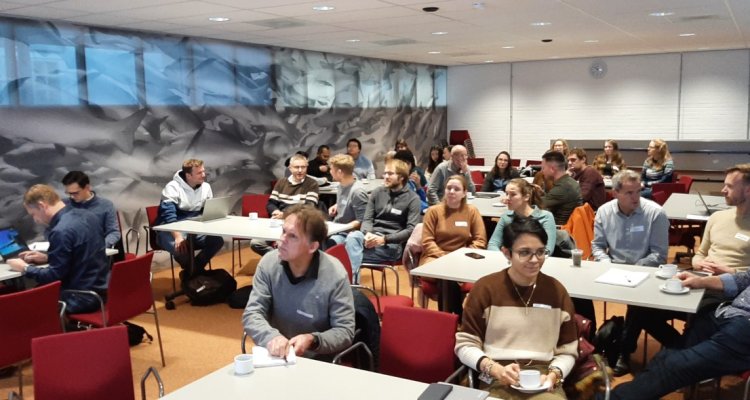
News
Seminar on optimising breeding programs in plants and animals for complex traits
On December 7th, Wageningen University & Research (WUR) hosted a seminar to discuss commonalities and differences between optimisation and of plant and animal breeding programs.
In total, approximately 40 people participated in-person and an additional 20 people attended the seminar online.
Starting point of the discussions was that after the QTL era, which has been more successful in terms of implementation in plant compared to animal breeding programs, the adoption of genomic selection has brought both worlds a step closer together. There are, however, still considerable differences in many aspects, for example the terminology that is used.
Animal breeding and plant breeding programs
To set the scene, the seminar started with a general presentation about animal breeding programs by Henk Bovenhuis from WUR-ABG (Animal Breeding and Genomics), and a presentation about plant breeding programs by Marc Rutten from Bayer Crop Science. Animal breeding relies on selecting – with relatively closed populations – the best parents in every generation to produce the next generation of animals. In plant breeding, an important aspect is product development from elite breeding material. Depending on the species, the elite material may be generated by introgression of material from any possible source, or may take more of a population-based approach, were selection takes place more within elite lines. One important difference is that genotype by environment interaction (GxE) has considerably more impact in plant breeding compared to animal breeding, while quantifying the magnitude of GxE is easier in plants because it is possible to grow the same genotype in multiple environments at the same time.
Identifying the optimal breeding program design
During the second part of the seminar, the talks by Piter Bijma and Torsten Pook (both from WUR-ABG) focused on tools to identify the optimal breeding program design. Both reviewed the advantages and disadvantages of using deterministic predictions versus stochastic simulations. Piter Bijma and Marc Rutten have previously developed the SelAction software for deterministic predictions, and Torsten Pook is the developer of the stochastic simulation program MoBPS. Deterministic predictions – relying explicitly on the so-called Breeders’ equation – enable quick evaluation of many different designs defined at a relatively global level. In contrast, stochastic simulations, while computationally more challenging, enable to reflect and optimize finer details of the breeding program.
Additionally, Piter Bijma shortly presented the concepts of selecting for so-called social or indirect genetic effects, which aims to select animals that perform well, while having a positive impact on the performance of its pen mantes. This work has a parallel in intercropping in plant breeding, where it is important to breed for varieties that perform well when grown together with other species in the same field.
The last two presentations were by Tobias Niehoff (WUR-ABG) and Robert van Loo (WUR Plant Breeding). Tobias Niehoff presented ideas on how to select parents whose offspring are not only expected to be superior on average, but also in terms of variation. More variation in the offspring implies a greater probability of selecting the offspring of a particular mating. This principle is used both in plant and animal breeding. Robert van Loo presented research that is being done on quinoa, as an example of the steps that are required when starting to select within a species for which breeding tools and a reference genome are not yet available.
The discussions during the seminar helped us to come a step further in terms of understanding commonalities between plant and animal breeding programs and the optimisation thereof, and also to better understand each other’s challenges and terminology.